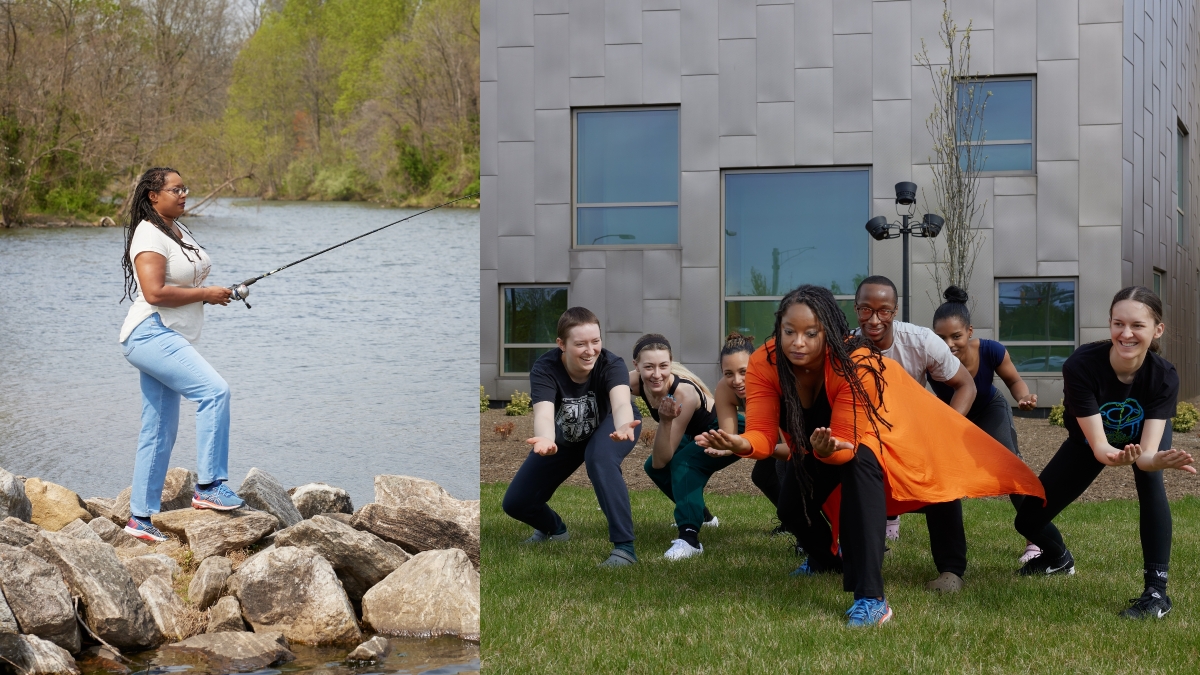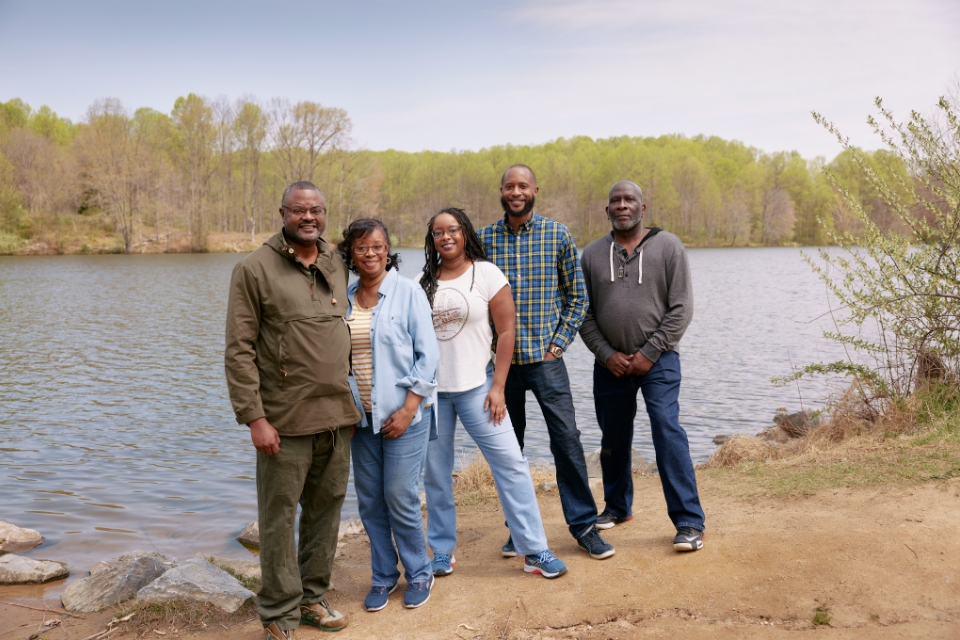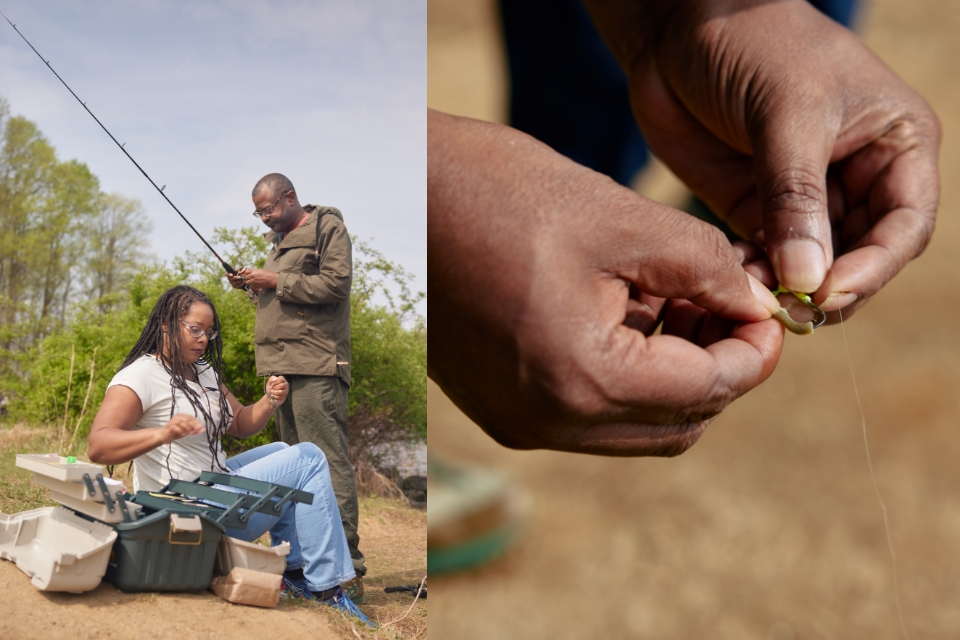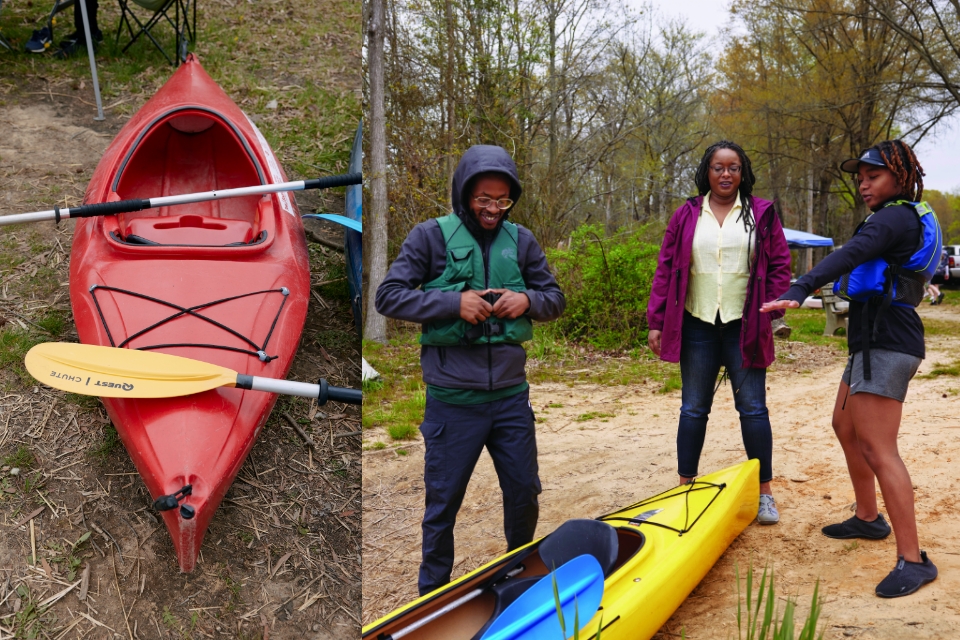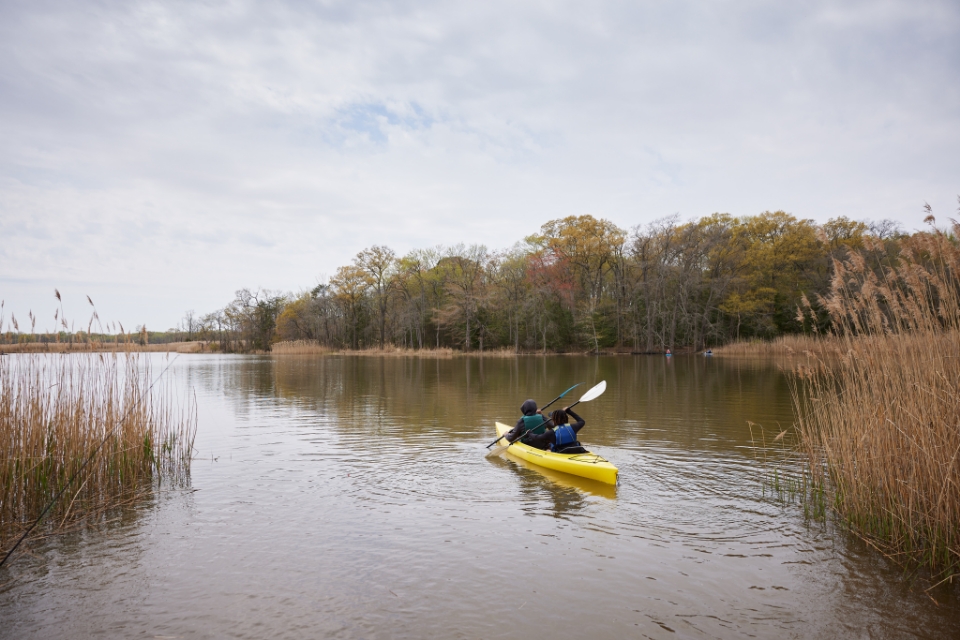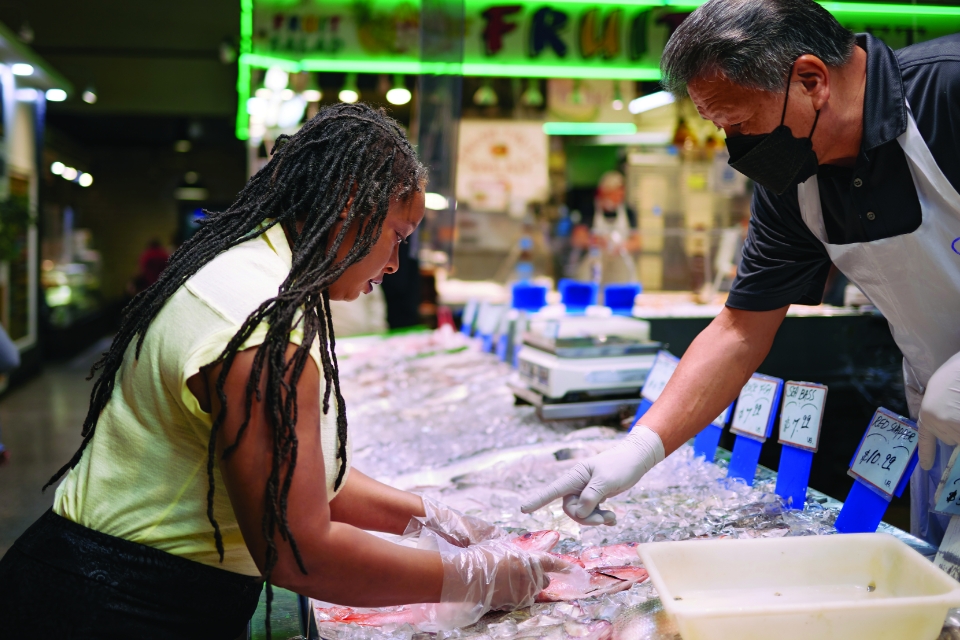Editor’s note: This story first appeared in ASU Thrive’s special photography issue, celebrating a day in the life of inspiring people across the ASU community.
BALTIMORE — Lekelia “Kiki” Jenkins helped forge a field exploring marine conservation technology, which studies ways technology can protect the ocean environment. Her science has earned her many top honors, including her appointment to the Ocean Studies Board of the National Academies of Sciences, Engineering, and Medicine. In addition, the associate professor in the School for the Future of Innovation in Society at ASU uses dance to help people better understand conservation problems and envision solutions.
In this photo feature, go behind the scenes with her to get to the heart of her work, her inspirational effect on others, and her love for Earth’s natural beauty and wildlife.
In the above photo, she shows off the way she uses dance to understand science and nature. In the photo, Jenkins teaches local students science dance techniques, including “flocking,” modeled after the way starlings fly in harmonized, breathtaking murmurations.
On Centennial Lake, (from left) brother Benjamin, mother Phyllis, Lekelia “Kiki” Jenkins, brother Leonard Jenkins and uncle Jerome Howard spend time together.
From Baltimore to Arizona
Jenkins grew up in Baltimore, and her family fished.
“Crabbing was my favorite activity,” she says.
Her love for being outdoors, for biodiversity and for fishing all seeded her purpose now as an ocean sustainability scientist.
Jenkins and Benjamin, preparing for the day on the water.
Connections nationwide supporting STEM
Mentoring future scientists is important, Jenkins says, especially for people who don’t often see themselves represented in STEM. On a Saturday in April, she visited with local university students from scuba and science clubs, exploring nature at a state park.
Collaboration is key
Jenkins’ work involves helping find and develop ways to protect both ocean life and fishers’ livelihoods. This involves working with, learning from and bringing together stakeholders.
Science dance
Jenkins, a dance minor in college, has always loved dancing and has used it as a way to understand and express concepts and emotions throughout her life. She has helped further pioneer the field of science dance, which seeks to communicate key aspects of technical research through body movement. “ASU is different. I can do science dance here as scholarship. It’s accepted and supported,” Jenkins says.
Through her “Sea Turtle Science Dance” and other works, Jenkins uses choreography to explain science. The dance has won awards at the International Sea Turtle Society competition and has been covered by the radio program “Science Friday.”
Photos by Jeff Newton
More Environment and sustainability

'Earth Day Amplified' promotes power of collective action
Everybody loves the concept of sustainability. They want to do their part, and the chance to say they’ve contributed to the well-being our of planet.But what does that actually mean?Arizona State…

Rethinking Water West conference explores sustainable solutions
How do you secure a future with clean, affordable water for fast-growing populations in places that are contending with unending drought, rising heat and a lot of outdated water supply infrastructure…
Meet the young students who designed an ocean-cleaning robot
A classroom in the middle of the Sonoran Desert might be the last place you’d expect to find ocean research — but that’s exactly what’s happening at Harvest Preparatory Academy in Yuma, Arizona.…


